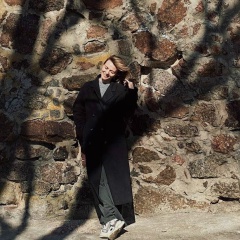Как измерить высоту
Сэр Эрнест Резерфорд, президент Королевской Академии и лауреат Нобелевской премии по физике, рассказывал следующую историю, служащую великолепным примером того, что не всегда просто дать единственно правильный ответ на вопрос. Некоторое время назад коллега обратился ко мне за помощью. Он собирался поставить самую низкую оценку по физике одному из своих студентов, в то время как этот студент утверждал, что заслуживает высшего балла. Оба, преподаватель и студент, согласились положиться на суждение третьего лица, незаинтересованного арбитра; выбор пал на меня. Экзаменационный вопрос гласил: "Объясните, каким образом можно измерить высоту здания с помощью барометра". Ответ студента был таким: "Нужно подняться с барометром на крышу здания, спустить барометр вниз на длинной веревке, а затем втянуть его обратно и измерить длину веревки, которая и покажет точную высоту здания". Случай был и впрямь сложный, так как ответ был абсолютно полным и верным! С другой стороны, экзамен был по физике, а ответ имел мало общего с применением знаний в этой области. Я предложил студенту попытаться ответить еще раз. Дав ему шесть минут на подготовку, я предупредил его, что ответ должен демонстрировать знание физических законов. По истечении пяти минут он так и не написал ничего в экзаменационном листе. Я спросил его, сдается ли он, но он заявил, что у него есть несколько решений проблемы, и он просто выбирает лучшее. Заинтересовавшись, я попросил молодого человека приступить к ответу, не дожидаясь истечения отведенного срока. Новый ответ на вопрос гласил: "Поднимитесь с барометром на крышу и бросьте его вниз, замеряя время падения. Затем, используя формулу L = (a*t^2)/2, вычислите высоту здания". Тут я спросил моего коллегу, преподавателя, доволен ли он этим ответом. Тот, наконец, сдался, признав ответ удовлетворительным. Однако студент упоминал, что знает несколько ответов, и я попросил его открыть их нам. "Есть несколько способов измерить высоту здания с помощью барометра", начал студент. "Например, можно выйти на улицу в солнечный день и измерить высоту барометра и его тени, а также измерить длину тени здания. Затем, решив несложную пропорцию, определить высоту самого здания." "Неплохо", сказал я. "Есть и другие способы?" "Да. Есть очень простой способ, который, уверен, вам понравится. Вы берете барометр в руки и поднимаетесь по лестнице, прикладывая барометр к стене и делая отметки. Сосчитав количество этих отметок и умножив его на размер барометра, вы получите высоту здания. Вполне очевидный метод." "Если вы хотите более сложный способ", продолжал он, "то привяжите к барометру шнурок и, раскачивая его, как маятник, определите величину гравитации у основания здания и на его крыше. Из разницы между этими величинами, в принципе, можно вычислить высоту здания. В этом же случае, привязав к барометру шнурок, вы можете подняться с вашим маятником на крышу и, раскачивая его, вычислить высоту здания по периоду прецессии." "Наконец", заключил он, "среди множества прочих способов решения данной проблемы лучшим, пожалуй, является такой: возьмите барометр с собой, найдите управляющего и скажите ему: "Господин управляющий, у меня есть замечательный барометр. Он ваш, если вы скажете мне высоту этого здания". Тут я спросил студента - неужели он действительно не знал общепринятого решения этой задачи. Он признался, что знал, но сказал при этом, что сыт по горло школой и колледжем, где учителя навязывают ученикам свой способ мышления. Студент этот был Нильс Бор (1885-1962), датский физик, лауреат Нобелевской премии 1922 г.
Сэр Эрнест Резерфорд, президент Королевской Академии и лауреат Нобелевской премии по физике, рассказывал следующую историю, служащую великолепным примером того, что не всегда просто дать единственно правильный ответ на вопрос. Некоторое время назад коллега обратился ко мне за помощью. Он собирался поставить самую низкую оценку по физике одному из своих студентов, в то время как этот студент утверждал, что заслуживает высшего балла. Оба, преподаватель и студент, согласились положиться на суждение третьего лица, незаинтересованного арбитра; выбор пал на меня. Экзаменационный вопрос гласил: "Объясните, каким образом можно измерить высоту здания с помощью барометра". Ответ студента был таким: "Нужно подняться с барометром на крышу здания, спустить барометр вниз на длинной веревке, а затем втянуть его обратно и измерить длину веревки, которая и покажет точную высоту здания". Случай был и впрямь сложный, так как ответ был абсолютно полным и верным! С другой стороны, экзамен был по физике, а ответ имел мало общего с применением знаний в этой области. Я предложил студенту попытаться ответить еще раз. Дав ему шесть минут на подготовку, я предупредил его, что ответ должен демонстрировать знание физических законов. По истечении пяти минут он так и не написал ничего в экзаменационном листе. Я спросил его, сдается ли он, но он заявил, что у него есть несколько решений проблемы, и он просто выбирает лучшее. Заинтересовавшись, я попросил молодого человека приступить к ответу, не дожидаясь истечения отведенного срока. Новый ответ на вопрос гласил: "Поднимитесь с барометром на крышу и бросьте его вниз, замеряя время падения. Затем, используя формулу L = (a*t^2)/2, вычислите высоту здания". Тут я спросил моего коллегу, преподавателя, доволен ли он этим ответом. Тот, наконец, сдался, признав ответ удовлетворительным. Однако студент упоминал, что знает несколько ответов, и я попросил его открыть их нам. "Есть несколько способов измерить высоту здания с помощью барометра", начал студент. "Например, можно выйти на улицу в солнечный день и измерить высоту барометра и его тени, а также измерить длину тени здания. Затем, решив несложную пропорцию, определить высоту самого здания." "Неплохо", сказал я. "Есть и другие способы?" "Да. Есть очень простой способ, который, уверен, вам понравится. Вы берете барометр в руки и поднимаетесь по лестнице, прикладывая барометр к стене и делая отметки. Сосчитав количество этих отметок и умножив его на размер барометра, вы получите высоту здания. Вполне очевидный метод." "Если вы хотите более сложный способ", продолжал он, "то привяжите к барометру шнурок и, раскачивая его, как маятник, определите величину гравитации у основания здания и на его крыше. Из разницы между этими величинами, в принципе, можно вычислить высоту здания. В этом же случае, привязав к барометру шнурок, вы можете подняться с вашим маятником на крышу и, раскачивая его, вычислить высоту здания по периоду прецессии." "Наконец", заключил он, "среди множества прочих способов решения данной проблемы лучшим, пожалуй, является такой: возьмите барометр с собой, найдите управляющего и скажите ему: "Господин управляющий, у меня есть замечательный барометр. Он ваш, если вы скажете мне высоту этого здания". Тут я спросил студента - неужели он действительно не знал общепринятого решения этой задачи. Он признался, что знал, но сказал при этом, что сыт по горло школой и колледжем, где учителя навязывают ученикам свой способ мышления. Студент этот был Нильс Бор (1885-1962), датский физик, лауреат Нобелевской премии 1922 г.
How to measure height
Sir Ernest Rutherford, President of the Royal Academy and Nobel Prize Laureate in Physics, told the following story, which serves as an excellent example of the fact that it is not always easy to give the only correct answer to a question. Some time ago, a colleague asked me for help. He was going to give the lowest grade in physics to one of his students, while this student claimed to deserve the highest grade. Both the instructor and student agreed to rely on the judgment of a third party, a disinterested arbitrator; the choice fell on me. The exam question read: "Explain how the height of a building can be measured with a barometer." The student's answer was: "You need to climb with the barometer on the roof of the building, lower the barometer down on a long rope, and then pull it back in and measure the length of the rope, which will show the exact height of the building." The case was indeed difficult, since the answer was absolutely complete and correct! On the other hand, the exam was in physics, and the answer had little to do with the application of knowledge in this area. I suggested that the student try to answer again. After giving him six minutes to prepare, I warned him that the answer must demonstrate knowledge of physical laws. After five minutes, he still hadn't written anything on the exam sheet. I asked him if he gave up, but he stated that he had several solutions to the problem and he just chose the best. Having become interested, I asked the young man to proceed with the answer, without waiting for the expiration of the allotted time. The new answer to the question was: "Climb the barometer to the roof and throw it down, measuring the fall time. Then, using the formula L = (a * t ^ 2) / 2, calculate the height of the building." Then I asked my colleague, the teacher, if he was satisfied with this answer. He finally gave up, finding the answer satisfactory. However, the student mentioned that he knew several answers, and I asked him to reveal them to us. “There are several ways to measure the height of a building with a barometer,” the student began. "For example, you can go outside on a sunny day and measure the height of the barometer and its shadow, as well as measure the length of the shadow of a building. Then, having decided on a simple proportion, determine the height of the building itself." “Not bad,” I said. "Are there other ways?" "Yes. There is a very simple method that I am sure you will enjoy. You take the barometer in your hands and go up the stairs, placing the barometer against the wall and making marks. By counting the number of these marks and multiplying it by the size of the barometer, you get the height of the building. Quite an obvious method. " “If you want a more complex method,” he continued, “then tie a string to the barometer and, swinging it like a pendulum, determine the amount of gravity at the base of the building and on its roof. From the difference between these values, in principle, you can calculate the height of the building In the same case, by tying a string to the barometer, you can climb with your pendulum on the roof and, swinging it, calculate the height of the building from the precession period. " “Finally,” he concluded, “among many other ways to solve this problem, perhaps the best is this: take the barometer with you, find the manager and tell him:“ Mr. manager, I have a wonderful barometer. He's yours if you tell me the height of this building. "Then I asked the student - did he really not know the generally accepted solution to this problem. He admitted that he knew, but said at the same time that he was fed up with school and college, where teachers impose on students his own way of thinking.This student was Niels Bohr (1885-1962), Danish physicist, Nobel Prize laureate 1922.
Sir Ernest Rutherford, President of the Royal Academy and Nobel Prize Laureate in Physics, told the following story, which serves as an excellent example of the fact that it is not always easy to give the only correct answer to a question. Some time ago, a colleague asked me for help. He was going to give the lowest grade in physics to one of his students, while this student claimed to deserve the highest grade. Both the instructor and student agreed to rely on the judgment of a third party, a disinterested arbitrator; the choice fell on me. The exam question read: "Explain how the height of a building can be measured with a barometer." The student's answer was: "You need to climb with the barometer on the roof of the building, lower the barometer down on a long rope, and then pull it back in and measure the length of the rope, which will show the exact height of the building." The case was indeed difficult, since the answer was absolutely complete and correct! On the other hand, the exam was in physics, and the answer had little to do with the application of knowledge in this area. I suggested that the student try to answer again. After giving him six minutes to prepare, I warned him that the answer must demonstrate knowledge of physical laws. After five minutes, he still hadn't written anything on the exam sheet. I asked him if he gave up, but he stated that he had several solutions to the problem and he just chose the best. Having become interested, I asked the young man to proceed with the answer, without waiting for the expiration of the allotted time. The new answer to the question was: "Climb the barometer to the roof and throw it down, measuring the fall time. Then, using the formula L = (a * t ^ 2) / 2, calculate the height of the building." Then I asked my colleague, the teacher, if he was satisfied with this answer. He finally gave up, finding the answer satisfactory. However, the student mentioned that he knew several answers, and I asked him to reveal them to us. “There are several ways to measure the height of a building with a barometer,” the student began. "For example, you can go outside on a sunny day and measure the height of the barometer and its shadow, as well as measure the length of the shadow of a building. Then, having decided on a simple proportion, determine the height of the building itself." “Not bad,” I said. "Are there other ways?" "Yes. There is a very simple method that I am sure you will enjoy. You take the barometer in your hands and go up the stairs, placing the barometer against the wall and making marks. By counting the number of these marks and multiplying it by the size of the barometer, you get the height of the building. Quite an obvious method. " “If you want a more complex method,” he continued, “then tie a string to the barometer and, swinging it like a pendulum, determine the amount of gravity at the base of the building and on its roof. From the difference between these values, in principle, you can calculate the height of the building In the same case, by tying a string to the barometer, you can climb with your pendulum on the roof and, swinging it, calculate the height of the building from the precession period. " “Finally,” he concluded, “among many other ways to solve this problem, perhaps the best is this: take the barometer with you, find the manager and tell him:“ Mr. manager, I have a wonderful barometer. He's yours if you tell me the height of this building. "Then I asked the student - did he really not know the generally accepted solution to this problem. He admitted that he knew, but said at the same time that he was fed up with school and college, where teachers impose on students his own way of thinking.This student was Niels Bohr (1885-1962), Danish physicist, Nobel Prize laureate 1922.
У записи 1 лайков,
1 репостов.
1 репостов.
Эту запись оставил(а) на своей стене Александр Тихомиров






















